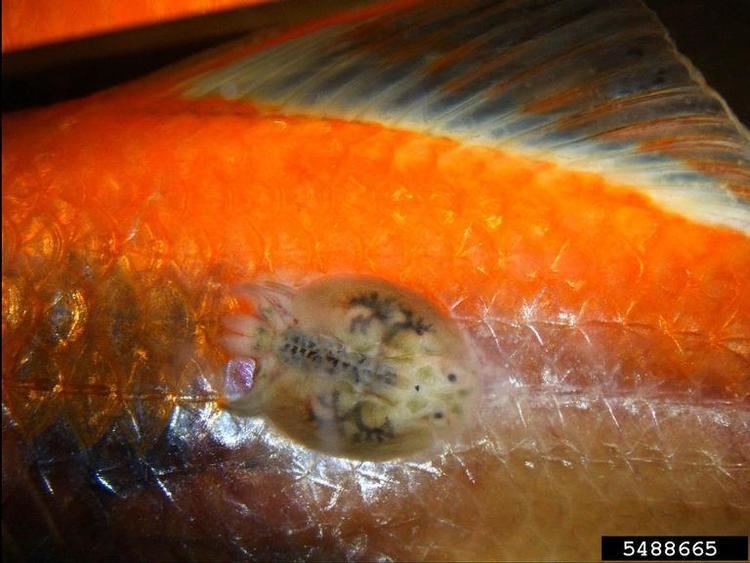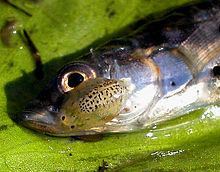Scientific name Argulidae | Higher classification Arguloidea Rank Family | |
 | ||
Order ArguloidaYamaguti, 1963 Similar Branchiura, Argulus foliaceus, Lernaea, Trichodina, Dactylogyrus | ||
The family Argulidae contains the carp lice or fish lice – a group of parasitic crustaceans of uncertain position within the Maxillopoda. Although they are thought to be primitive forms, they have no fossil record. The Argulidae are the only family in the order Arguloida (occasionally "Arguloidea"), although a second family, the Dipteropeltidae, has been proposed.
Contents

Description

Fish lice vary in size from just a few millimetres to over 30 mm (1.2 in) long, with females usually somewhat larger than the males. Almost all species in the family are ectoparasites on fish, with a few on invertebrates or amphibians. They have a flattened, oval body, which is almost entirely covered by a wide carapace. Their compound eyes are prominent, and the mouthparts and the first pair of antennae are modified to form a hooked, spiny proboscis armed with suckers, as an adaptation to parasitic life. They have four pairs of thoracic appendages, which are used to swim when not attached to the host. They leave their hosts for up to three weeks to mate and lay eggs, and reattach behind the fish's operculum, where they feed on mucus and sloughed-off scales, or pierce the skin and feed on the internal fluids. The eggs hatch into parasitic postnauplius larvae.
Classification

The 173 recognised species are divided among six genera. The centres of diversity are the Afrotropical and Neotropical ecozones.
Impact

Fish lice occasionally reach high enough densities to cause fish kills in aquaculture operations, or more rarely in wild populations of fish. They can also become abundant in aquaria, sometimes resulting in the death of ornamental fish.

